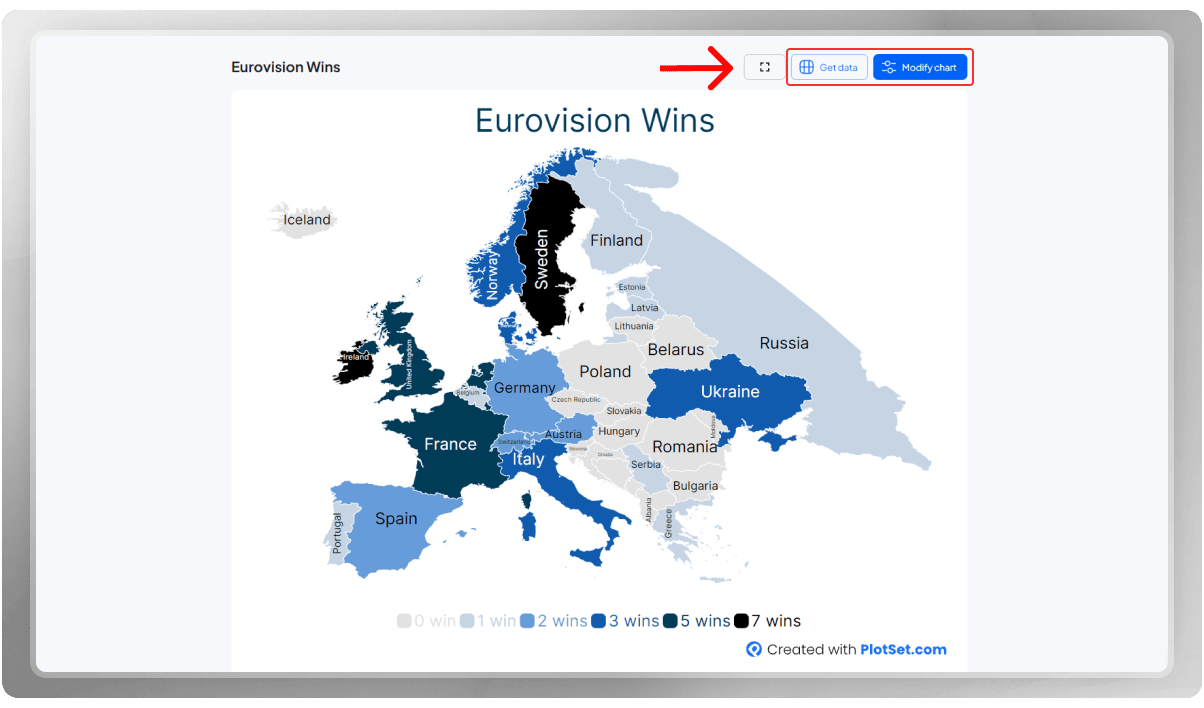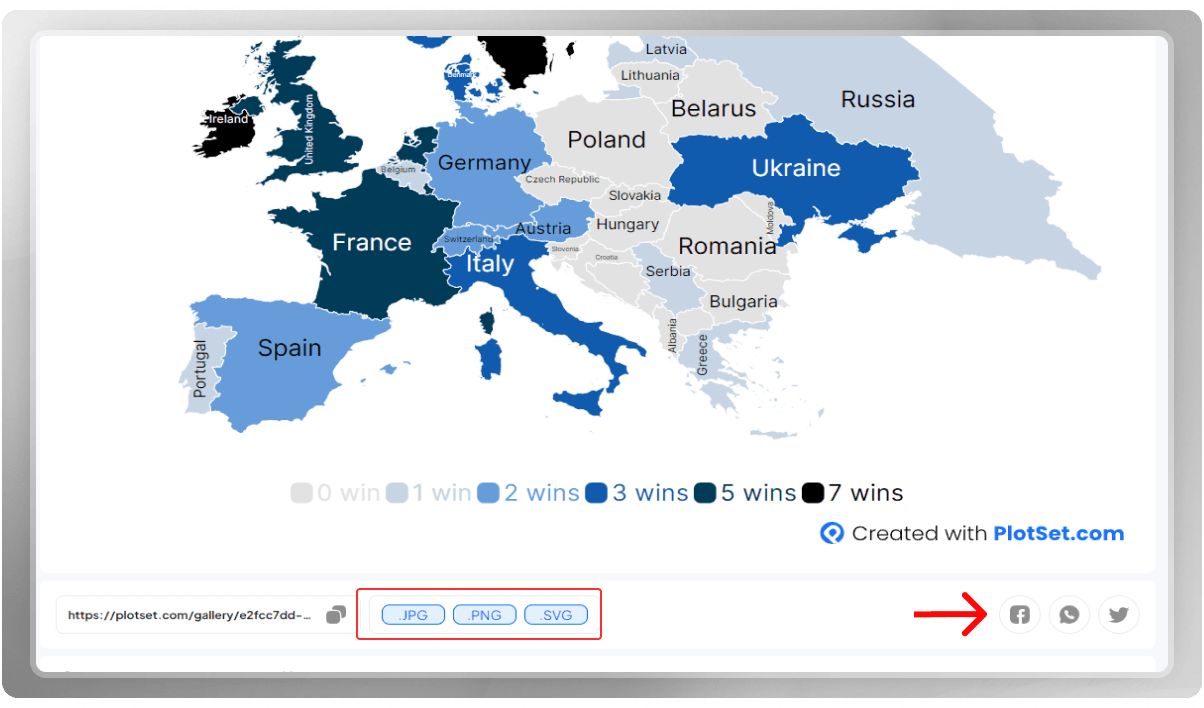How to Fork a Chart or Template

If you see one of PlotSet charts somewhere or wish to use one shared with you, you need to learn how to fork charts.
Why Forking
Forking a template means duplicating a project that already exists. That way, you can improve or modify the chart according to your preferences without altering the original template. The forked copy of the chart becomes an independent entity, allowing you to create your own version of different projects.
When you click on the chart link shared with you or open one from our Gallery, this is the format that you'll face:

Hit the 'Modify chart' button to apply the changes you have in mind. Note that you can easily obtain the data of the chart in question by simply hitting the 'Get data' button.
The small square icon beside 'Get data' is the option that lets to view the chart on full screen.

Of course, you can obtain an export from the chart as it is. Just pick your preferred format and hit it. Care to share it on social media? You have that option too!
One bonus point
Suppose you have designed a chart that is perfectly fine, but you think it might look better if you alter a few things. The catch is that you don't want to mess up the design you already have.
Fear not! The solution is to duplicate the project and apply the new changes on the duplicated version. That way, you can compare both designs with one another when you are done.

You can now work on your own version of the templates while maintaining a connection to the original source.
If you like, you can watch the related tutorial video on our YouTube Channel: How to Fork a Chart or Template
